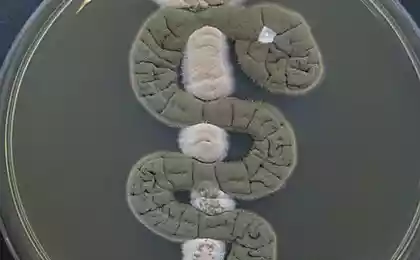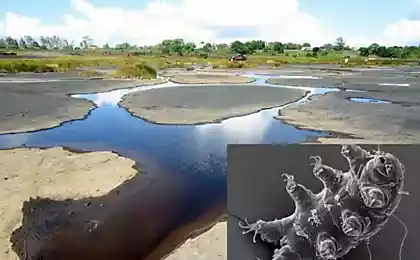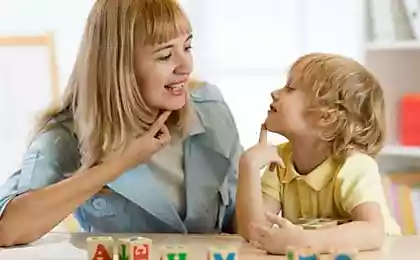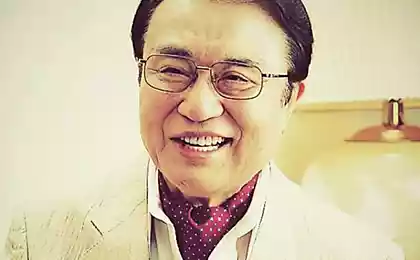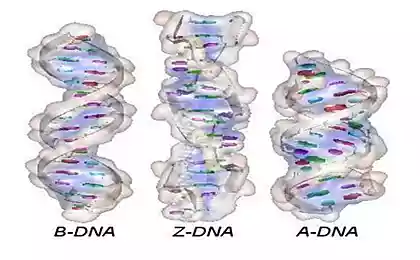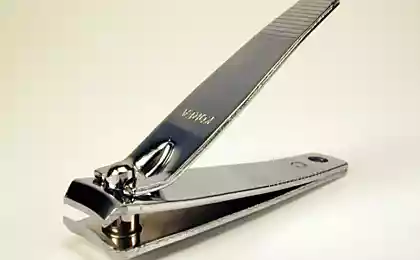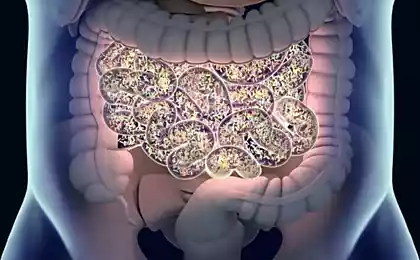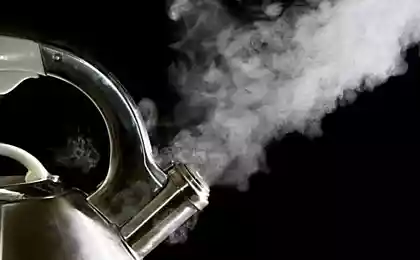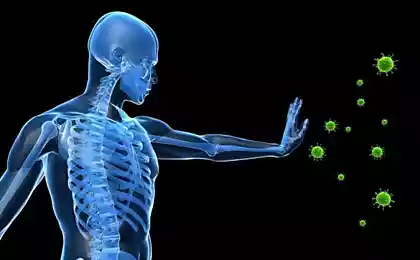398
Who lives in my mouth
Germs are nesting between the gustatory papillae of the tongue.
Mouth each of us a real jungle, consisting of hundreds of different kinds of bacteria, protozoa, fungi, viruses. Manufacturers of toothpastes, toothbrushes and other hygiene of the oral cavity represent this population as an army of villains, and the ad gives the impression that to avoid tooth decay is possible only at the root of destroying the jungle. However, the reality is somewhat more complicated.

Most of these microorganisms live in your mouth permanently. This is not surprising. In their habitat year-round warm, about 37 degrees Celsius, constantly wet all the time and do nutrients. In addition to edibles in the mouth often get foreign objects — fingers, pencils, pens and so on, and each brings new germs. Every square millimeter of tissue of the cheeks, gums every crease, every groove of the language are hidden organisms. Even well-cleaned teeth are teeming with billions of bacteria.
Most experts estimate the number of species of microorganisms residing in the human oral cavity, 200 — 500, of which only studied and named about fifty. They look very diverse: balls, avoidy, sticks, something like corn cobs, brushes for bottles, spiral, snake... They are attached to one place or swim in the saliva, rotating the flagellum like a propeller.
Despite this wealth of species, researchers have long concentrated their attention on a single species of bacteria — Streptococcus changeable. This rounded bacteria living only in the teeth of a man opened in 20 years. In 1956 it was discovered that she is able to break down sugar, producing lactic acid which corrodes tooth enamel leading to tooth decay.
To study the whole microbial community of the mouth, began at the Royal dental College in Aarhus (Denmark) in 1966. Eleven volunteers for three weeks attached to the teeth removable plates and banned the use of toothbrush. Records from time to time removed and examined under a microscope. Scientists saw on the surface of initially clean plates appeared the germs, as one species is replaced by another and finally established the same community as the surrounding plate surface of the teeth.
Eight hours after toothbrushing they already teeming with streptococci, there are also a number of rod-shaped actinomycetes. Through the day the teeth are covered with a dense layer of these "pioneers", and they added a long rod-shaped or filamentous organisms, including fuzobakterii, producing foul-smelling sulfur compounds. Then there are the accumulation of streptococci in the form of corn cobs. Even longer if you don't brush your teeth, multiply special dental spirochetes. Three weeks later the picture of the microbial community calms down, change over, the bacteria cover the surface of the teeth layer with a thickness of two dozen cells (15 micron).
American microbiologist Paige Cofield asked the question: how to get germs in his mouth newborn babies? He took the children and their mothers samples of saliva for five years and compared the DNA present in the saliva of germs. Cofield found that the source of the microbes is the mother of the child. It turned out that almost all of us mouth lives its own strain of Streptococcus is variable, and only the mother and child usually have the same strain. Of the 34 children, 24 had the same strain as their mothers, and 10 strains were of unknown origin (by the way, many of these ten vskarmlivanie artificially). Apparently, the microbes obtained in the infant age remain in the mouth for life. Established from infancy a colony of microorganisms to protect its territory like a pack of monkeys in the rainforest.
Comparison of the microflora of the mouth, the couple showed that their germs are different (although some types of bacteria that promote gum disease, is transmitted by kissing). Of the 300 couples strains of dental germs matched only one pair.
Moreover, a comparison of the DNA in none of the cases showed that any of the children were exposed to the oral microflora from the father. This is not even have those 10 children of the 34 who had strains from the parent.
Cofield suggests that it's not even so much closer and more frequent contact of the child with the mother than with the father, as in the part of the immune system. Even before birth, and then with mother's milk the child receives the mother's antibodies. According to Cofield, these antibodies do not react to those microbes to which the mother has lived his entire life, and this lack of immune response is transmitted to the child. When in feeding or kissing, he gets maternal dental microorganisms that its immune system does not resist them.
Promising experiments conducted by the microbiologist from the University of Florida Jeff Hillman. First, he found a strain of Streptococcus is variable, which suppresses the competing strains, secreting a special substance. Then Hillman has subjected this strain to genetic manipulation and has ensured that the ability to produce this antimicrobial agent increased, and the ability to excrete acid that destroys the teeth, disappeared completely. A scientist infected with strep young rats and put them on a diet with a high sugar content. In contrast to rats with normal microflora of the mouth, receiving the same diet, in experimental animals the teeth remained healthy. Now Hillman is seeking permission to conduct experiments on people. He said one such vaccine modified micro-organisms will protect the teeth from tooth decay for life.
The traditional approach to oral hygiene — try to destroy all microorganisms. But this is not true, some of them perform a useful function, stopping the penetration of more harmful microorganisms.

In the picture, taken with a scanning electron microscope, dental plaque.
The materials used messages the following foreign editions: the "New Scientist" (UK), "Bild der Wissenschaft", "Das Tier", "Illustrierte Wissenschaft" and "VDI-Nachrichten" (Germany), Scientific American (USA). published
P. S. And remember, only by changing their consumption — together we change the world! ©
Join us in Facebook , Vkontakte, Odnoklassniki
Source: glubinnaya.ru/archives/2311
Mouth each of us a real jungle, consisting of hundreds of different kinds of bacteria, protozoa, fungi, viruses. Manufacturers of toothpastes, toothbrushes and other hygiene of the oral cavity represent this population as an army of villains, and the ad gives the impression that to avoid tooth decay is possible only at the root of destroying the jungle. However, the reality is somewhat more complicated.

Most of these microorganisms live in your mouth permanently. This is not surprising. In their habitat year-round warm, about 37 degrees Celsius, constantly wet all the time and do nutrients. In addition to edibles in the mouth often get foreign objects — fingers, pencils, pens and so on, and each brings new germs. Every square millimeter of tissue of the cheeks, gums every crease, every groove of the language are hidden organisms. Even well-cleaned teeth are teeming with billions of bacteria.
Most experts estimate the number of species of microorganisms residing in the human oral cavity, 200 — 500, of which only studied and named about fifty. They look very diverse: balls, avoidy, sticks, something like corn cobs, brushes for bottles, spiral, snake... They are attached to one place or swim in the saliva, rotating the flagellum like a propeller.
Despite this wealth of species, researchers have long concentrated their attention on a single species of bacteria — Streptococcus changeable. This rounded bacteria living only in the teeth of a man opened in 20 years. In 1956 it was discovered that she is able to break down sugar, producing lactic acid which corrodes tooth enamel leading to tooth decay.
To study the whole microbial community of the mouth, began at the Royal dental College in Aarhus (Denmark) in 1966. Eleven volunteers for three weeks attached to the teeth removable plates and banned the use of toothbrush. Records from time to time removed and examined under a microscope. Scientists saw on the surface of initially clean plates appeared the germs, as one species is replaced by another and finally established the same community as the surrounding plate surface of the teeth.
Eight hours after toothbrushing they already teeming with streptococci, there are also a number of rod-shaped actinomycetes. Through the day the teeth are covered with a dense layer of these "pioneers", and they added a long rod-shaped or filamentous organisms, including fuzobakterii, producing foul-smelling sulfur compounds. Then there are the accumulation of streptococci in the form of corn cobs. Even longer if you don't brush your teeth, multiply special dental spirochetes. Three weeks later the picture of the microbial community calms down, change over, the bacteria cover the surface of the teeth layer with a thickness of two dozen cells (15 micron).
American microbiologist Paige Cofield asked the question: how to get germs in his mouth newborn babies? He took the children and their mothers samples of saliva for five years and compared the DNA present in the saliva of germs. Cofield found that the source of the microbes is the mother of the child. It turned out that almost all of us mouth lives its own strain of Streptococcus is variable, and only the mother and child usually have the same strain. Of the 34 children, 24 had the same strain as their mothers, and 10 strains were of unknown origin (by the way, many of these ten vskarmlivanie artificially). Apparently, the microbes obtained in the infant age remain in the mouth for life. Established from infancy a colony of microorganisms to protect its territory like a pack of monkeys in the rainforest.
Comparison of the microflora of the mouth, the couple showed that their germs are different (although some types of bacteria that promote gum disease, is transmitted by kissing). Of the 300 couples strains of dental germs matched only one pair.
Moreover, a comparison of the DNA in none of the cases showed that any of the children were exposed to the oral microflora from the father. This is not even have those 10 children of the 34 who had strains from the parent.
Cofield suggests that it's not even so much closer and more frequent contact of the child with the mother than with the father, as in the part of the immune system. Even before birth, and then with mother's milk the child receives the mother's antibodies. According to Cofield, these antibodies do not react to those microbes to which the mother has lived his entire life, and this lack of immune response is transmitted to the child. When in feeding or kissing, he gets maternal dental microorganisms that its immune system does not resist them.
Promising experiments conducted by the microbiologist from the University of Florida Jeff Hillman. First, he found a strain of Streptococcus is variable, which suppresses the competing strains, secreting a special substance. Then Hillman has subjected this strain to genetic manipulation and has ensured that the ability to produce this antimicrobial agent increased, and the ability to excrete acid that destroys the teeth, disappeared completely. A scientist infected with strep young rats and put them on a diet with a high sugar content. In contrast to rats with normal microflora of the mouth, receiving the same diet, in experimental animals the teeth remained healthy. Now Hillman is seeking permission to conduct experiments on people. He said one such vaccine modified micro-organisms will protect the teeth from tooth decay for life.
The traditional approach to oral hygiene — try to destroy all microorganisms. But this is not true, some of them perform a useful function, stopping the penetration of more harmful microorganisms.

In the picture, taken with a scanning electron microscope, dental plaque.
The materials used messages the following foreign editions: the "New Scientist" (UK), "Bild der Wissenschaft", "Das Tier", "Illustrierte Wissenschaft" and "VDI-Nachrichten" (Germany), Scientific American (USA). published
P. S. And remember, only by changing their consumption — together we change the world! ©
Join us in Facebook , Vkontakte, Odnoklassniki
Source: glubinnaya.ru/archives/2311
Vegetable diet salads for weight loss
Prevent cancer: ways to avoid half of the tumors on the example of individual canadian province
